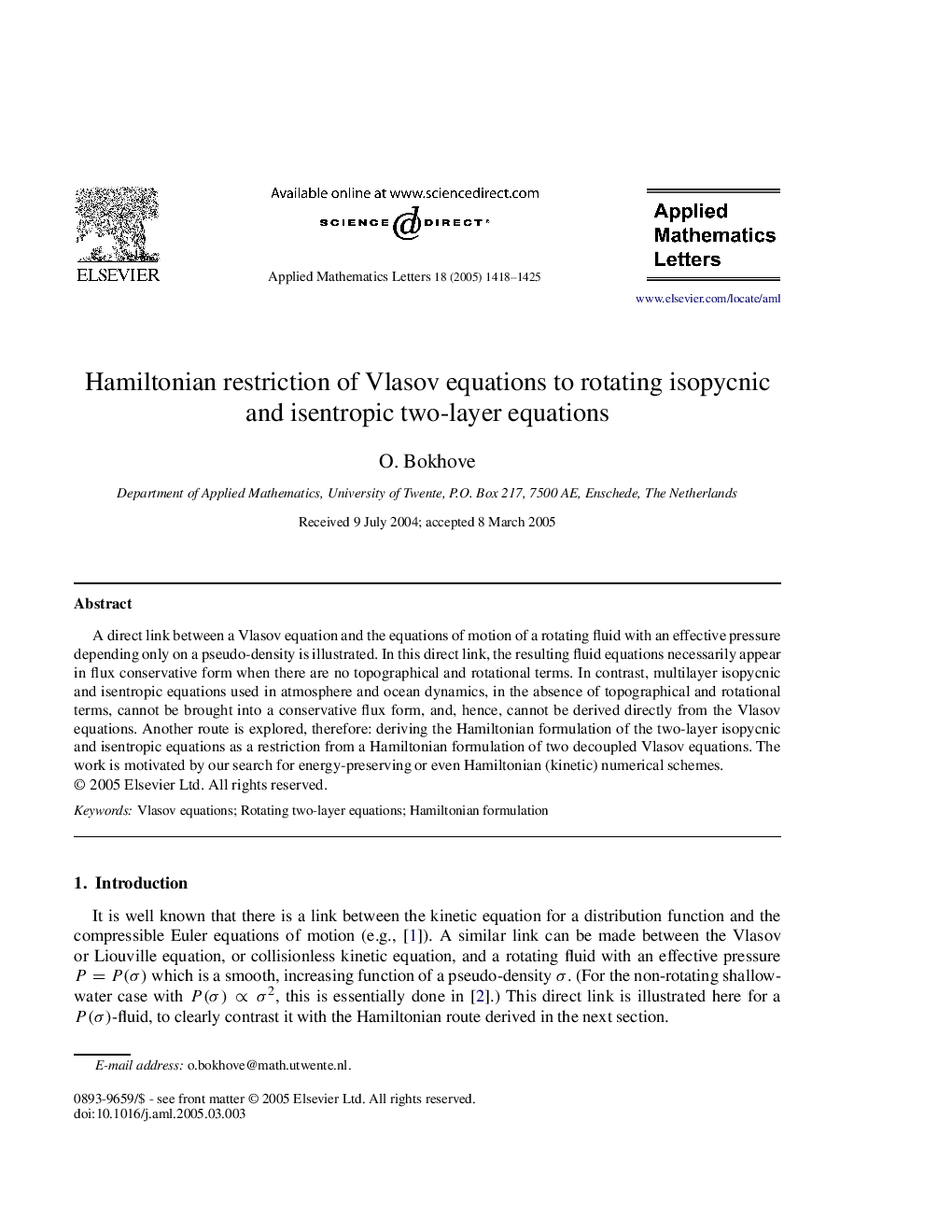| Article ID | Journal | Published Year | Pages | File Type |
|---|---|---|---|---|
| 10678398 | Applied Mathematics Letters | 2005 | 8 Pages |
Abstract
A direct link between a Vlasov equation and the equations of motion of a rotating fluid with an effective pressure depending only on a pseudo-density is illustrated. In this direct link, the resulting fluid equations necessarily appear in flux conservative form when there are no topographical and rotational terms. In contrast, multilayer isopycnic and isentropic equations used in atmosphere and ocean dynamics, in the absence of topographical and rotational terms, cannot be brought into a conservative flux form, and, hence, cannot be derived directly from the Vlasov equations. Another route is explored, therefore: deriving the Hamiltonian formulation of the two-layer isopycnic and isentropic equations as a restriction from a Hamiltonian formulation of two decoupled Vlasov equations. The work is motivated by our search for energy-preserving or even Hamiltonian (kinetic) numerical schemes.
Related Topics
Physical Sciences and Engineering
Engineering
Computational Mechanics
Authors
O. Bokhove,
